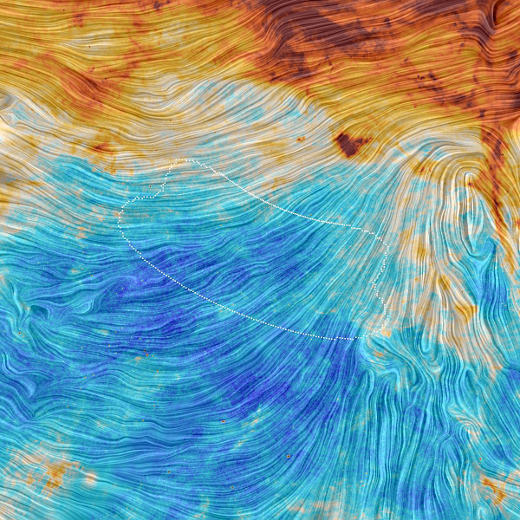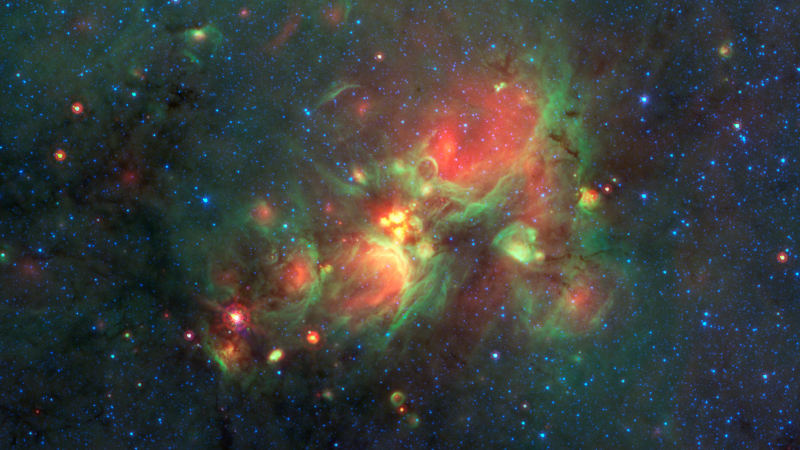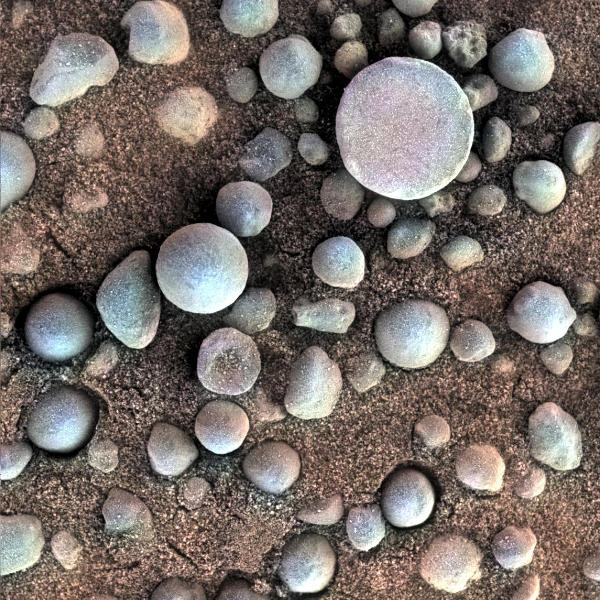A joint initiative between NASA, the National Oceanic and Atmospheric Administration (NOAA) and US Air Force resulted in the recent, successful launch of NOAA’s Deep Space Climate Observatory (DSCOVR) satellite. DSCOVR went into space aboard a SpaceX Falcon 9 rocket from Cape Canaveral Air Force Station in Florida. DSCOVR will help NOAA provide more accurate space weather forecasts, warnings and alerts by being able to better monitor solar wind observations.
All posts by space
Keck array field

The European Space Agency’s Plank mission is described by them as including a large telescope that collects light from the, “Cosmic Microwave Background and focuses it onto the focal plane of the scientific instruments on board”. The end result is a picture like this where the texture shows us the direction of the galactic magnetic field with a color scale representing the emission from dust. The upper right hand corner of the image is where the dust emission is strongest along the plane of the galaxy.
Yellowballs in space

The central part of this picture of the Milky Way galaxy, as taken by NASA’s Spitzer Space Telescope, shows an amazing feature of our universe. The yellow parts of the infrared image, referred to as “yellowballs” by researchers, represent a phase of massive star formation in the galaxy. They are at an intermediary stage of massive star formation taking place before these stars create an emptiness in the surrounding gas and dust. These yellowballs are many times (100s or 1000s) the size of our solar system.
Pebbles and stones and rocks, oh my!

Mars Explorer Rover Opportunity had been scouring the martian surface for a few months when it took this 2004 picture, close to the Fram Crater. Though these look like large size pebbles and stones, this image only shows about a 3 centimeter cross section of the Mars surface and was taken by the microscopic imager camera on Opportunity’s robotic arm. The official name for the pebbles and stones is actually spherules – these mineral concentrations are called “blueberries” and are rich in hematite.
Biology research in space
NASA’s various research activities and experiments in space include the study of biological organisms. This is an example of a rodent based study being conducted on the International Space Station (ISS) and designed to examine biology of rats in the space environment. Learnings from this type of biological study could help make changes needed to improve human space travel and stays. Such scientific research can also help greatly improve human health, here on Earth. This study was being done at NASA’s Ames Research Center, with Dr. Ruth Globus (Ph.D.) as the project scientist.